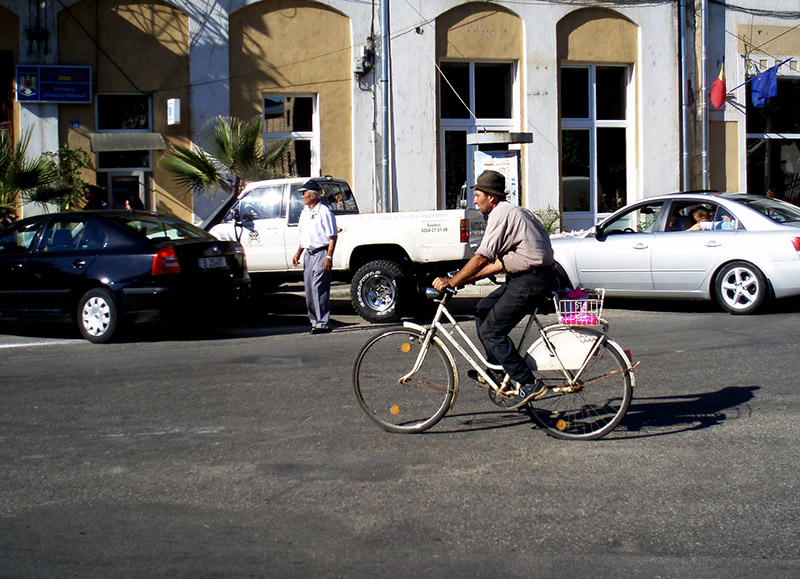
In Romania - C.Ban
Between 2000 and 2009 Romania experienced one of Europe's highest growth rates. Yet even before the economic crisis hit Bucharest hard, it became clear that the wealth of the economic boom was built with dramatic social costs, paid mostly by children, unemployed, pensioners, and Roma
Between 2000 and 2009 Romania experienced one of Europe's highest growth rates. To anyone familiar with the country prior to this economic fiesta, the changes of the last decade are too dramatic to ignore. A real estate boom radically revised the sweep of sleepy villages and urban neighborhoods. A diverse restaurant, café, and art scene appeared almost overnight in large cities. Implausibly luxurious shopping malls began to dot cityscapes, catering to the increasingly sophisticated tastes of the growing middle class. The simultaneously loved and hated Dacia 1300 automobile, the symbol of the socialist proto-consumer's society of the 1970s, almost became a museum exhibit. For the first time in the country's modern history, large numbers of Romanians traveled abroad for pleasure, reveled in conspicuous consumption and financed new apartments with mortgages.
These were not just cosmetic changes. The boom altered the social fabric of Romanian society. Fantastic fortunes were made from real estate speculation. The local elite of bankers, industrialists, and legal professionals grew, made ever more conspicuous claims to upper class status, and generated new tastes for yachts, customized luxury cars, Western university education, and villas in a new residential genre: the gated community. At the same time, the ranks of the Romanian middle-class were joined in fewer numbers by the usual suspects of post-communism (corrupt government employees, racketeers, small entrepreneurs, NGO types), and more by university-trained professionals. These began to be competitively employed by multinationals, dynamic local firms, and academic niches tied to the industry and EU research funding.
Fueled by cheap credit and labor shortages that fed wage increases, the new wealth of the educated middle class changed the culture of social interaction. The old middle class "badges of distinction" (polished language, high culture consumption) were gradually junked in favor of sophisticated consumerism and investments of disposable income into the vortex of real estate speculation.
"It all felt like a high-octane race that changed most of my friends" remembers Claudia Grapini, a 32 year old designer at a multinational company. "As eleven hour workdays became the norm and as the common complaint was that time was sucked out of one's life, the same friends who five years before had been enthralled with the music, art, and bookstore scene in Bucharest now became these worn-out drones who would turn the dinner into an opportunity to obsess over the price of the square meter of residential land, the best deals on Spanish floor tiles or the arcane complexities of leasing an Alfa Romeo. People talked as if in ten years Romania would become like Spain or Greece and, frankly, if you read the financial media's coverage of Romania between 2005 and 2008, the assumption no longer sounded outrageous."
Granted, some of these transformations were financed with cheap credit disbursed by newly-privatized banks. Yet the biggest engines of these systemic changes had been regressive tax policies, foreign investment, and migrant remittances. Thus, as the economy boomed, the tax system was completely rebuilt to downgrade the redistributive effort, and to privilege the twin political objectives of fostering a robust Romanian middle class, and increasing Romania's attractiveness to global capital. Consequently, starting in 2005, personal and corporate income taxes were set at a "flat" rate of 16 percent, while real estate transactions remained barely taxed. The new tax philosophy in effect gave a subsidy to companies and to employees with the highest salaries. According to a study by the Group for Applied Economics, a Bucharest-based think tank, the clear winners of the 2005 flat tax reforms were the families who earned wages that had been three times greater than the average national gross wage in 2005. At the same time, pro-business policies, clear prospects of EU membership, and a cheap and relatively skilled labor force led to a spike in foreign direct investment. In less than five years, nearly all state-owned banks, utilities, and oil companies were purchased by West European corporations. The manufacturing sector underwent a similar buyout, and, as a result, gleaming Western-financed factories began to churn out French cars, Finnish mobile phones and Italian designer fashions.
Foreign investments changed the export structure as well. By 2007, automobiles, industrial equipment, and other machinery accounted for the largest share of Romanian-made goods injected in global trade flows, thus ending the postcommunist dependence on exports of textiles and raw materials. Moreover, because of a dependable network of public engineering programs, urban Romania attracted the first substantial investments in high-end industrial niches like software and industrial design. While most of this new investment created low-end industrial and service jobs, it was a boom for many university-trained professionals who demanded (and got) salaries several times greater than those of semi-skilled workers or government employees with the same education. When Renault announced that it would open a large research and development facility and began a hiring spree in the engineering departments of Romanian campuses, many felt that the developmental shift from assembling Western products to designing and manufacturing them locally was within reach. From World Bank reports to the international financial press, a new consensus emerged: endemic corruption and poor infrastructure aside, Romania was no longer a place of fitful macroeconomics and hopeless misery. It was a country lining up to be Europe's next economic tiger.
Yet, even before the economic meltdown of 2008 punctured such hyperbolic expectations, it was clear that the wealth of the economic boom was built with dramatic social costs. According to an extensive 2009 report ordered by the Romanian President, extreme poverty decreased during the boom, but relative poverty increased, with the children, the unemployed, the pensioners, the informal workers, and the Roma bearing the brunt. The picture looks even more dramatic when one considers that the poverty threshold for Romania was unrealistically established at slightly less than 100 euros a month, an amount that barely covers a month's rent for a tiny apartment, or three weeks of sufficient food for a family of three. Poverty rates are several times higher in rural areas, where subsistence agriculture, crumbling infrastructure, failing schools and disappearing primary care clinics reveal an even bleaker picture.
Unfortunately, the ways in which EU subsidies for farmers are currently disbursed seem to bring few consistent benefits to small farmers and even to make existing inequalities even more dramatic. According to the Romanian Center for European Policies (CRPE), a Bucharest think-tank, in 2008, the EU handed 51 percent of the agricultural subsidies owed to Romania to farms with more than 100 square hectares of land and who represent less than one percent of all farms in Romania. According a CRPE report on this matter, this distribution of subsidies is likely to create strong incentives for the emergence of a "Latin-American" scenario in the Romanian countryside: a large rural population locked in the poverty of subsistence farming and low paid informal employment, a downwardly mobile class of middle farmers and a few thousands of very large, generously subsidized, and politically powerful landowners.
What led to this sad dénouement of Romania's economic transition? Undoubtedly, structural factors are important, whether we talk about high rates of job destruction in the 1990s, the worsening mobility of the rural population or the low capacity of the education system and of the society at large to improve the plight of the Roma. But, as a political scientist once put it, "structures don't come with an instruction sheet." Political choices, by contrast, often do. Thus, the institutional choices made by postcommunist governments, often at the behest of international financial institutions, ensured that unemployment means a rapid descent into the underclass. The deliberate policy to shrink benefits and to grant them for barely half a year had been grounded in the neoliberal idea that living on unemployment benefits should be as unattractive as possible. And unattractive it has been. By law, unemployment benefits exceed the poverty threshold only for workers with twenty years of seniority. By contrast, the youngest unemployed Romanians were eligible for unemployment benefits set at 82% of the official poverty threshold. The prospect of being on the dole was so discouraging that only a third of the Romanians who were registered as unemployed received any benefits at all. Moreover, a tenth of the poorest Romanians, most of them Roma, had been left to fend for themselves.
How did the unemployed survive in this hostile environment? The available evidence suggests that almost three million people either emigrated to (largely) Southern Europe, or entered the domestic informal labor market. The latter poses high risks of poverty and is estimated to trap over half a million "working poor" families, with the typical victim being young, poorly educated, Roma, and employed in agriculture. The boom of the construction sector and the inflow of FDI in manufacturing could have absorbed much of the unemployed, but it did not. The labor supply in these sectors was so high between 2006 and 2008 that employers scrambled to bring workers from China and to tempt skilled and semi-skilled Romanian migrants with unheard-of wages. Yet informal workers and the unemployed were late to take on such offers. This was either because they had become too discouraged or deskilled, or because they did not have the skills required. The problem was compounded, perhaps ironically, by the fact that the new generations of vocational school graduates and retraining programs, the backbone of any manufacturing-based economy, had inferior skills to the workers who were trained during state socialism and its immediate aftermath. This obsolescence and decay of the vocational system worsened as a near-sighted private sector, a weak state, and labor unions forced into fierce battles for their own survival failed to develop a coordinated strategy for the adequate funding and reform of the system in lockstep with the times.
In conclusion, the Romanian economic boom of the last decade and the policy choices made by the government led to extraordinary opportunities for domestic capital accumulation, the expansion of the domestic market and the strengthening of the export base. As a result, by 2008, Romania was better positioned than at any other point after 1989 to acquire the characteristics of an economically-dynamic capitalist country. Unfortunately, the economic crisis that began in 2008 squeezed both external and internal demand, which sent the country in a tailspin. The GDP went from eight percent growth in 2008 to eight percent fall in 2009, unemployment rate is set to double by the end of the year to almost 10 percent and the value of remittances sent by emigrants dropped sharply. Yet unlike in Western Europe, where social spending is considered a legitimate demand stabilizer, in Romania it is regarded as an unaffordable "luxury." As a result, the government plans to enact cuts in welfare benefits and social programs. Furthermore, rather than make the taxation system more equitable by adopting a progressive income tax and cutting the value added tax on food and other basic necessities, the government contemplates options that will make it even more regressive.
Yet aside from the flurry of problems created by the crisis, it is clear that even in its heyday, Romania's economic success story was based on policies that not only produced socially unjust consequences, but were also self-defeating for economic development per se. First, the institutionalization of a conservative welfare state reduced unemployment by facilitating the draining of the labor market of almost a third of the active population via migration and informal employment. Second, these forced employment strategies worsened the problems of the welfare state by "extracting" the activities of millions of people from the tax base. Finally, the failure to fund and organize an effective and responsive labor training system reduces the likelihood that Romania could become a high-skill export economy anytime soon. And once this vicious circle comes into being, no amount of tax-cutting and employment protection deregulation could slow a dramatic economic meltdown.
This outcome was far from inevitable and it can be reversed towards more socially-inclusive, indeed more "European" outcomes. The anniversary of 1989 should make Romanian policy elites pause and remember that the promise of the "return to Europe" had nothing to do with fostering social exclusion. For the "high growth, low tax, high poverty" model adopted by Romania and other new EU members is clearly not the most democratic or even the most efficient avenue to sustainable socio-economic progress. In theory, the current economic crisis should call into question the neoliberal economic ideas that inspired this model in the first place. But practice is an altogether different animal and, so far, the debate on socio-economic reform in Romania suggests that the alternative voices are scarce, politically marginal and dwarfed by the noises of a political and media scene imploding under the weight of its own fantasies.







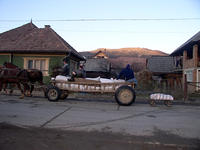
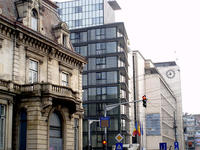
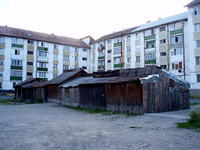
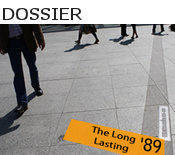
 To Top
To Top